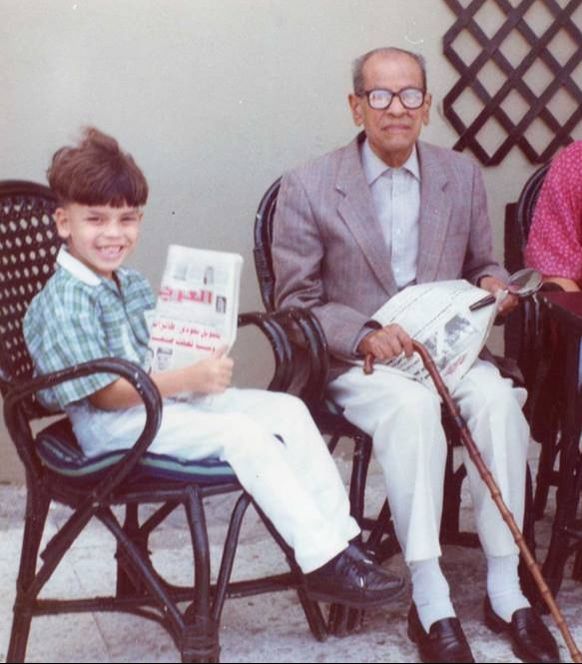Arabic culture is very rich in literary content. Arab poetry, ash-shi‘ru al-‘Arabīyu, in particular is one the oldest forms of Arabic artistic expression. Written Arabic poetry dates from around the 6th century. Some of the famous Pre-Islamic poets include Antarah ibn Shaddad, Imru' al-Qais and Al-Khansa.
Poetry flourished in the Islamic civilization. One of the more famous and ever contemporary of these poets is Qays Ibn al-Mulawwah, or majnun layla. The story of Qays and Layla originates in the Ummayad dynasty in the 7th century. Qays was refused as a suiter for Layla because of an old family feud. Qays wrote many volumes of poetry bemoaning his unrequited love for Layla. Their story was adapted by Persian poets and may have inspired Shakespeare's Romeo and Juliet.
Other famous poets of the time include; Al-Mutanabbi, Abu-Nuwas and Rabia Al-Adawiyya. These poets explored politics, love and religious themes among many others.
Other literary forms also flourished under the Islamic civilization. Non-fictional literary compilations started appearing as early as the 9th century. Fictional literature was popular too and the most famous of these works is the 1000 and One Nights which is placed in the genre of Epic Arabic literature.
Below I have included some blurbs about some of the more contemporary champions of Arabic literature and poetry.
Poetry flourished in the Islamic civilization. One of the more famous and ever contemporary of these poets is Qays Ibn al-Mulawwah, or majnun layla. The story of Qays and Layla originates in the Ummayad dynasty in the 7th century. Qays was refused as a suiter for Layla because of an old family feud. Qays wrote many volumes of poetry bemoaning his unrequited love for Layla. Their story was adapted by Persian poets and may have inspired Shakespeare's Romeo and Juliet.
Other famous poets of the time include; Al-Mutanabbi, Abu-Nuwas and Rabia Al-Adawiyya. These poets explored politics, love and religious themes among many others.
Other literary forms also flourished under the Islamic civilization. Non-fictional literary compilations started appearing as early as the 9th century. Fictional literature was popular too and the most famous of these works is the 1000 and One Nights which is placed in the genre of Epic Arabic literature.
Below I have included some blurbs about some of the more contemporary champions of Arabic literature and poetry.
naguib mahfouz
|
Naguib Mahfouz was an Egyptian writer. In 1988 he won the Nobel Prize for Literature. He published over 50 novels, over 350 short stories, many film scripts and plays over a career spanning 7 decades. He was an admired celebrity and author but remained an extremely accessible individual.
I personally had the pleasure of meeting him in Alexandria on a trip there with my family. We found him extremely approachable and friendly. Due to some of the controversial material in his writings, fundamentalist made an attempt on his life, stabbing the 82 year old in the neck in 1994. Although he survived the attempt, he was heavily guarded for the rest of his life. Naturally, after becoming a Nobel Prize laureate his books have been translated into many languages. He is without doubt the most celebrated contemporary Arab novelist. |
AHMED SHAWQIAhmed Shawqi was an Egyptian poet and playwright, born in 1868 to a notable family who mingled with the royalty of the time.
Ahmed Shawqi attended law school in Egypt and later qualified in translation as well. After completing his studies, he was offered a job at the court of the Khedive Abbas II of Egypt. After working for a year at the royal court, he was sent to France to further his study of law at the Universities of Montpellier and Paris. Ahmed Shawqi pioneered the modern Egyptian literary movement and introduced the genre of "poetic epics" to the Arabic poetic tradition. However, he was exiled to Spain by the English in 1914. He eventually returned to Egypt in the 1927. Upon his return he was crowned the "Prince of Poets" by his contemporaries. Although he died in 1932, he is still known as the Prince of Poets among Arabs and many of his poems are still taught at schools today. Some of his poems were further popularized when they were sung by Umm Koulthoum. You can read some verses of his poetry and my translation of them by downloading the file shown below.
|
MAHMOUD DARWISHMahmoud Darwish was a Palestinian poet. He was born in 1941 and died in 2008. He was born in Galilee to a family of landowners, however, when the Israeli forces attacked his village in 1948 his family fled to Lebanon.
Darwish published his first book of poetry, Asafir bila ajniha or "Wingless Birds" when he was only 19 years of age. Over his long career Darwish published thirty volumes of poetry and eight books of prose. As an author he was very popular and has won many awards for his literary works. In many ways he was considered THE Palestinian national poet In Darwish's work, Palestine represented the fall from Eden, pain and resurrection laced with the depressed anguish of exile. |
NAZIK AL-MALAAIKAAl-Malaaika was born in Baghdad and wrote her first poem at 10 years of age. She was born into a cultured family. Her mother was also a poet, and her father was a teacher. She is famous for being the first Arab poet to use free verse.
Nazik graduated in 1944 from the College of Arts in Baghdad and later completed a Master's Degree in comparative literature at the University of Wisconsin–Madison with a Degree of Excellence. She also earned a qualification from the Institute of Fine Arts and graduated from the Department of Music in 1949. She was appointed Professor at the University of Baghdad, the University of Basrah. She lived in Iraq until the Baath party came to power after which she moved to Kuwait where she was a Professor at Kuwait University. Nazik moved from Kuwait to Egypt during the first Gulf war and lived in Egypt until her death in 2007 at the age of 83. | ||||||||
| imam_shafei_poem.pdf | |
| File Size: | 183 kb |
| File Type: | |

